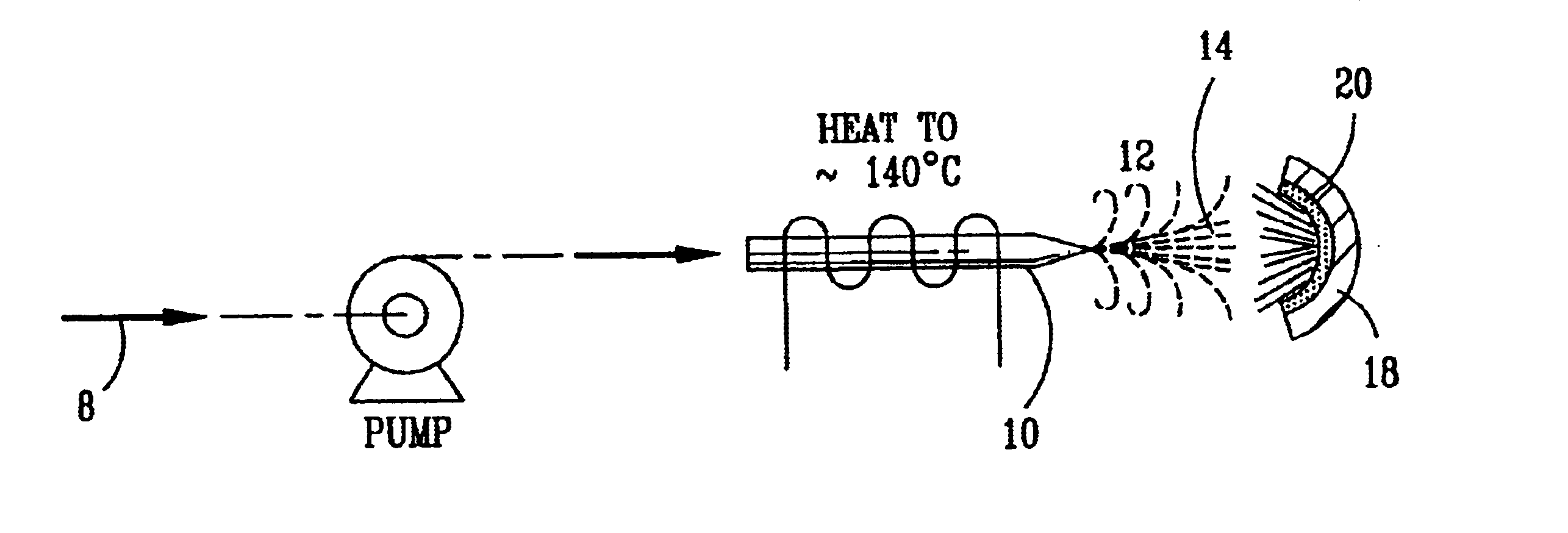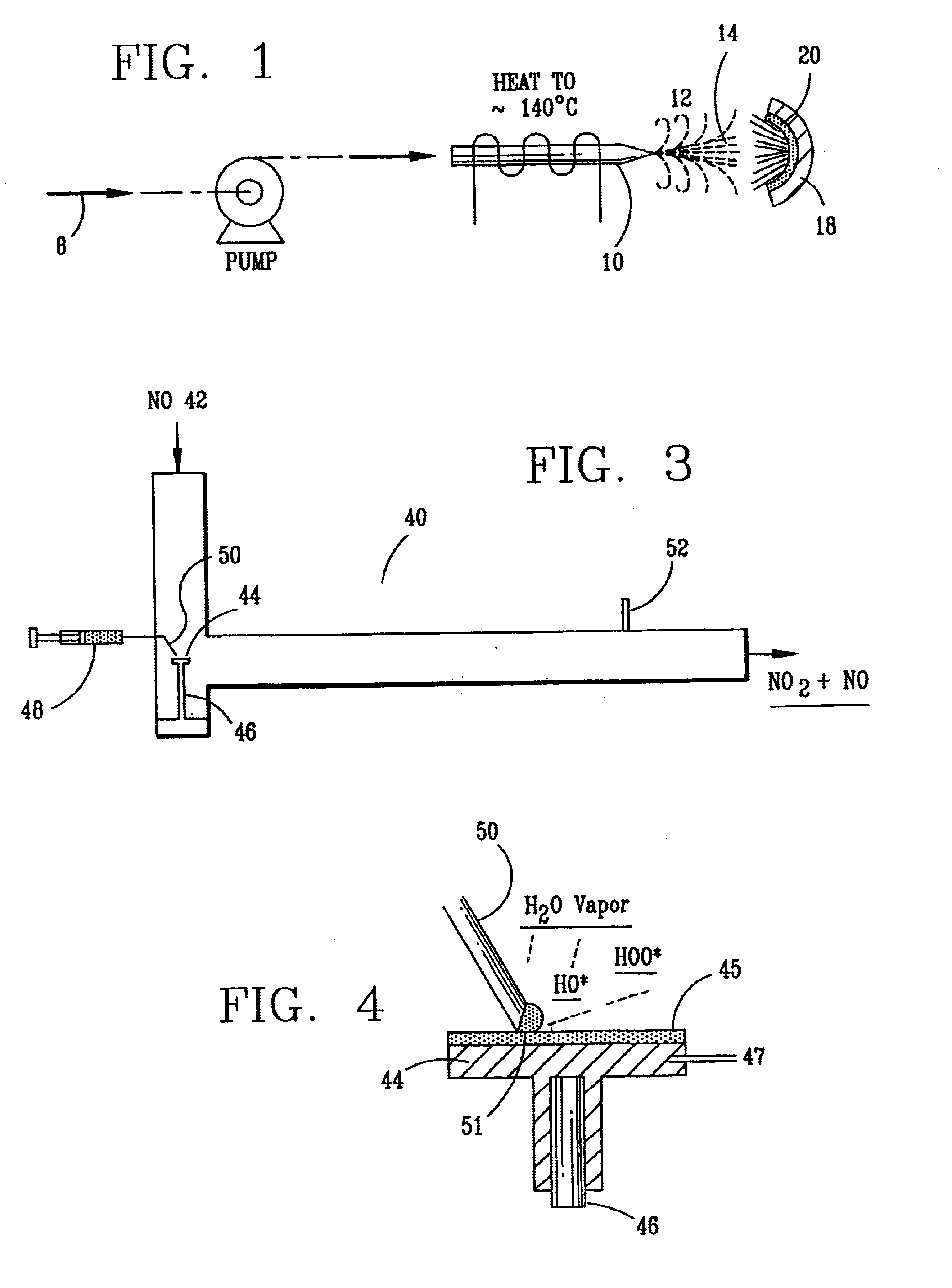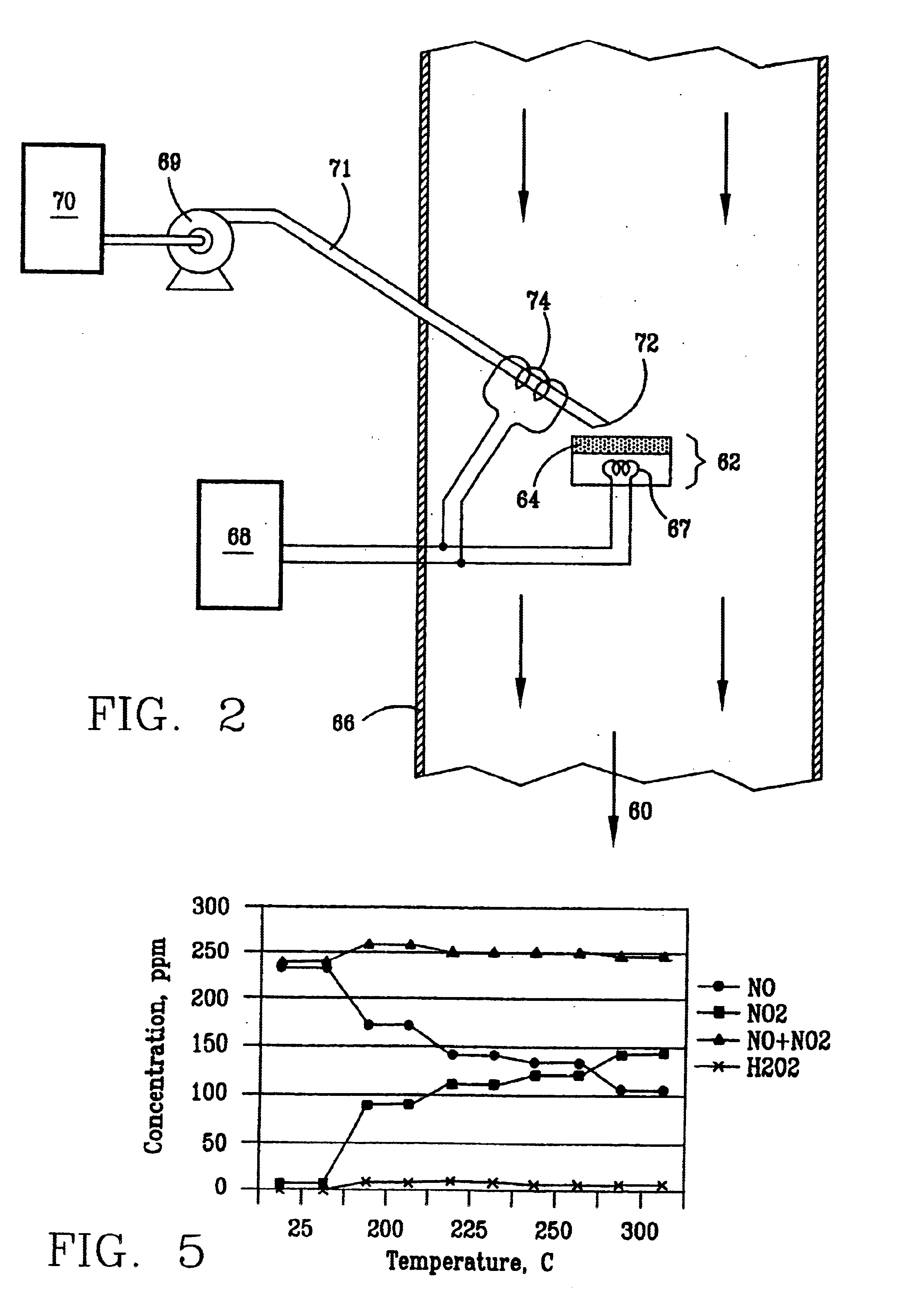High temperature decomposition of hydrogen peroxide
a hydrogen peroxide and high temperature technology, applied in the direction of nitrogen oxide/oxyacids, separation processes, nitrous oxides, etc., can solve the problems of high processing cost, high cost and complexity, complex effect of nitric oxide removal from gas stream, etc., to achieve low water solubility, increase the effectiveness of water scrubber systems, and improve water soluble
- Summary
- Abstract
- Description
- Claims
- Application Information
AI Technical Summary
Benefits of technology
Problems solved by technology
Method used
Image
Examples
example 1
A laboratory scale breadboard version of the subject high temperature decomposition process was used to confirm the conversion of NO to NO.sub.2 when exposed to oxidative free radicals generated from the decomposition of hydrogen peroxide on a heated surface having a catalytic coating. In this example, a compressed gas cylinder that contained 5000-ppm nitric oxide in nitrogen was connected to a flow controller adjusted to provide 0.2 liters per minute of the mixture. The output of the flow controller was mixed with the output from a second flow controller that provided 4.8 liters per minute of nitrogen. The resulting mixture, which had a concentration of 200 ppm of NO was introduced into a test fixture 40 as illustrated in FIGS. 3 and 4. The test fixture 40 was fabricated from 2-inch clear PVC tubing that directed the test gas mixture 42 of 200 ppm NO over a mild steel block 44 with a 0.44 square-inch surface area that had an oxidized catalytic coating 45 (iron oxide) or a small sta...
example 2
For power plant applications the concentration of NO is typically in the 200-300 ppm range, which represents about 90 percent of the total NOx emissions with the remainder being primarily NO.sub.2. Assuming that the total flow of the gas stream containing NO through the flue gas stack is 1,000,000 cfm, the amount of hydrogen peroxide can be calculated as follows:
This example starts with a 50% hydrogen peroxide solution and passes it through a check valve to prevent back-flow. Then, the hydrogen peroxide solution is heated to raise the temperature to approximately 140.degree. C. as illustrated in FIG. 1. The heat vaporizes some of the water in the hydrogen peroxide solution and produces an enriched hydrogen peroxide solution and steam. The steam and the enriched hydrogen peroxide solution are impinged onto a heated (200-500.degree. C.) surface. The heated surface in this example is covered by a catalytic coating of iron oxide because it produces a high degree of conversion. The resul...
PUM
 Login to View More
Login to View More Abstract
Description
Claims
Application Information
 Login to View More
Login to View More - R&D
- Intellectual Property
- Life Sciences
- Materials
- Tech Scout
- Unparalleled Data Quality
- Higher Quality Content
- 60% Fewer Hallucinations
Browse by: Latest US Patents, China's latest patents, Technical Efficacy Thesaurus, Application Domain, Technology Topic, Popular Technical Reports.
© 2025 PatSnap. All rights reserved.Legal|Privacy policy|Modern Slavery Act Transparency Statement|Sitemap|About US| Contact US: help@patsnap.com



